
As the Russia-Ukraine war continues, new reports have emerged claiming Chinese firms, including ones linked to the Chinese Communist Party, have been shipping arms to Russia, including assault rifles, drone components, and body armor.
Advertisement
Politico, in its report, claimed that the weapons shipment to Russia transpired between June and December 2022, well after President Vladimir Putin ordered the special military operations in Ukraine.
China North Industries Group Corporation Limited sent CQ-A rifles to the Russian firm Tekhkrim in June 2022, according to the report. Even though these rifles were categorized as “civilian hunting rifles,” they’ve been reported to have been used by the Chinese paramilitary.
The report also revealed that Chinese firms had sent Russian entities 12 shipments of drone parts and more than 12 tons of body armor.
Earlier, US Secretary of State Antony Blinken had said that China is actively considering providing weapons and ammunition to Russia.
“We’ve been watching this very, very closely. And, for the most part, China has been engaged in providing rhetorical, political, diplomatic support to Russia, but we have information that gives us concern that they are considering providing lethal support to Russia in the war against Ukraine,” Blinken said in an interview, shortly after his meeting at a security conference in Munich with the Chinese Foreign Minister Wang Yi.
“It was important for me to share very clearly with Wang Yi that this would be a serious problem,” Blinken said.
Advertisement
The meeting between Blinken and Wang came amid heightened tensions in recent weeks after the US shot down what it says was a Chinese spy balloon and what China insists was only a meteorological research platform that veered off course.
The incident led to the postponement of Blinken’s planned trip to Beijing, which was expected to commence on February 3.
The US ambassador to the United Nations, Linda Thomas-Greenfield, also expressed her concern about any arms supply by China to Russia, saying “that would be a red line.”
The former US Army Vice Chief of Staff, Retired Gen. Jack Keane, appreciated the Biden administration’s move to expose China’s possible intention to supply lethal weaponry to Russia, which he believes could persuade Beijing to hold off on such plans.
“And I think coming out and exposing, and I would go further and tell them what we think they are attempting to provide, China will pull back likely after that public exposure,” Keane said.
Before the US could indicate what China could be attempting to provide Russia, as Retired Gen. Jack Keane suggested, Chinese military enthusiasts have already begun providing hints as to what the Chinese military aid to Russia could comprise.
A popular Chinese Twitter handle, 无条件爱国 (@zhao_dashuai), had come up with a very interesting “catalog of weapons” that Russia would need to battle NATO-backed Ukraine.
Advertisement

China Could Provide Air Support Weaponry To Russia
“China has every right to send arms to Russia in their war effort against NATO,” said Zhao. “China’s lethal weapon support for Russia should match the number of weapons the US has sold to Taiwan over the decades.”
Zhao recommends several Chinese-made weapon systems and munitions for the Russian army while noting that the current ongoing conflict in Ukraine is “characterized by trench warfare stalemate, and artillery duels” because of the “inability of Russian aerospace forces to provide timely air support.”
As EurAsian Times discussed earlier, this apparent failure of the Russian military to provide air support to its ground forces can be primarily attributed to the Man-Portable Air Defense Systems (MANPADS) employed by the Ukrainian forces to a great extent in the air-denial strategy against the Russian fighter jets.
This is evident from the enormous losses suffered by Russia’s legacy close air support (CAS) platform, the Su-25 Grach (‘Rook’), known by the NATO reporting name Frogfoot.
According to the latest figures compiled by the military tracking blog Oryx based on visual confirmations, 25 Russian Su-25s have been destroyed, with three reported as destroyed in non-combat-related incidents.
To address this issue, Zhao recommends three ways China can help Russia.
Advertisement
READ MORE
Swarm Drones
The first way involves Chinese-made drone swarm systems, representing a massive upgrade from the Iranian-made Shahed-136 ‘kamikaze’ drones currently used by the Russian military in Ukraine.
The Russian military has successfully conducted swarm attacks using these drones against Ukrainian positions as far as Kyiv, deep behind Ukrainian frontlines in the eastern part of the country.
However, these swarm attacks are known to have entailed only around 5-12 drones for a single assault which have also been able to overwhelm Ukrainian air defense systems.
So, Zhao recommends a Chinese-made truck-mounted swarm launcher that can simultaneously launch up to 200 drones.
This possibly refers to a system tested by the state-owned China Electronics Technology Group Corporation in 2020. It reportedly launched up to 200 drones at once, rapidly and while the transport platforms were in motion.
“Mr. Putin, this system will allow your soldiers a window of opportunity to attack while the swarm is flying over Ukrainian positions,” says Zhao
Advertisement
Wing Loong-10 Or Cai Hong-4 UAVs
The second option recommended by Zhao is “Multi-purpose high tech UAVs,” which include the Wing Loong-10 and Cai Hong 4 unmanned aerial vehicles (UAVs)
The Wing Loong-10 (WL-10), also called the WZ-10, is a high-altitude long-endurance (HALE) UAV developed by China’s state-owned Aviation Industry Corporation of China (AVIC).
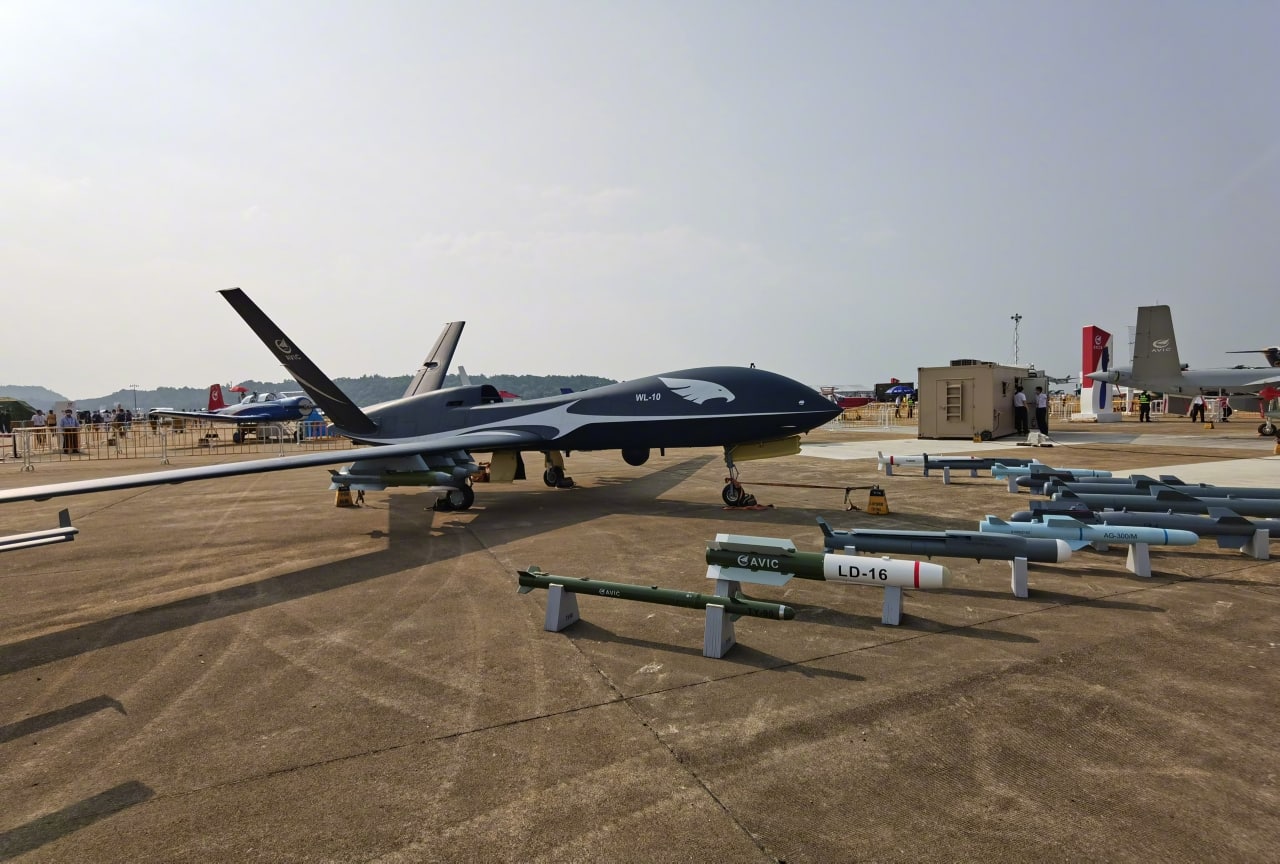
It has a wingspan of about 10 meters. It can carry a range of ammunition, including a TY-90 infrared (IR)-guided air-to-air missile, BBM2 small-diameter guided bomb, AG-300M air-to-surface missiles, YJ-9E missile with active radar seeker, etc.
While the Cai Hong-4 (CH-4)-series of drones are medium-altitude long-endurance (MALE) UAVs developed by China’s state-run Aerospace Long-March International Trade Co (ALIT) and the China Aerospace Science and Technology Corporation (CASC).
China’s People’s Liberation Army (PLA) is known to operate two variants: the standard CH-4A with a flight endurance of 30 hours, which is primarily designed for reconnaissance missions, and the strike-capable CH-4B, which can carry a 345-kilogram combat payload but has a lesser flight endurance of 14 hours.
Advertisement
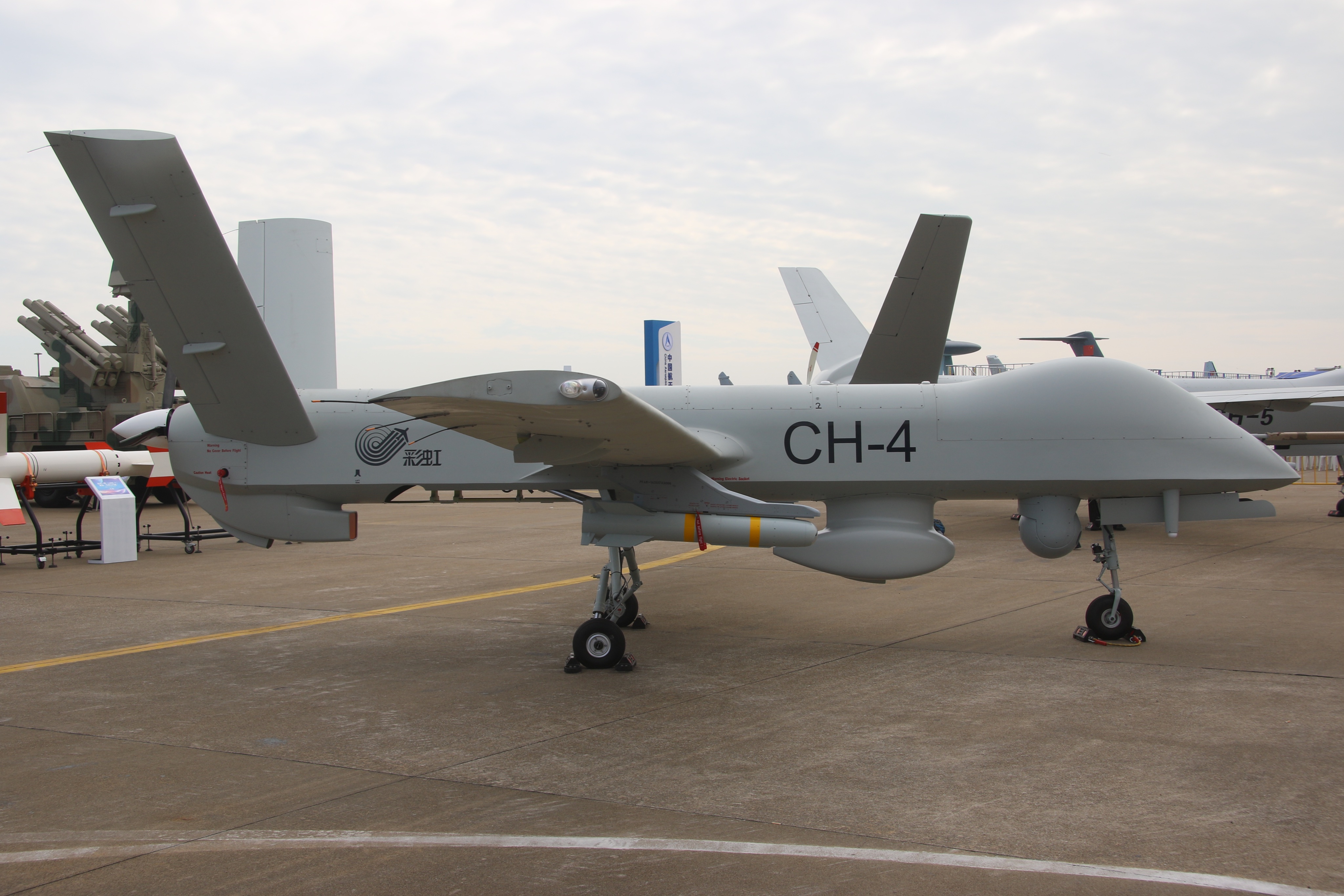
The CH-4B can carry various weapons, including Lan Jian 7 (Blue Arrow 7) laser-guided air-to-surface missiles, TG100 laser/INS/GPS-guided bombs, and the AR-1/HJ-10 anti-tank missile, also known as the Chinese version of the Hellfire missile.
According to Zhao, these drones are versatile, and the CH-4 is also inexpensive. However, supplying them to the Russian military will require training and infrastructure. China can provide technicians who could be embedded in Russian UAV units but will not pull the trigger for legal reasons.
Targeting Pods And Precision-Guided Munitions
The third option Zhao recommends is targeting pods and precision-guided munitions (PGMs) for manned fighters.
Zhao is mindful that Russia has some homegrown models of PGMs. However, they have not been used as much by the Russian military in the ongoing conflict in Ukraine, which is suggestive of production-related problems Russia faces because of Western sanctions.
“Mr. Putin, if you want to end the war this year, buying them from China is your best bet. We have a plethora of PGMs for you to choose from,” says Zhao. “I highly recommend the LS-6/500kg Glide Bomb.”
The Lei Shi-6 (LS-6) is a precision-guided glide bomb unveiled by the Luoyang Optoelectro Technology Development Center in late 2006. Its tail kit has deployable wings, which can support several bomb weights, from 50kg to 500kg, according to Jane’s Defense Weekly report in 2011.
Advertisement
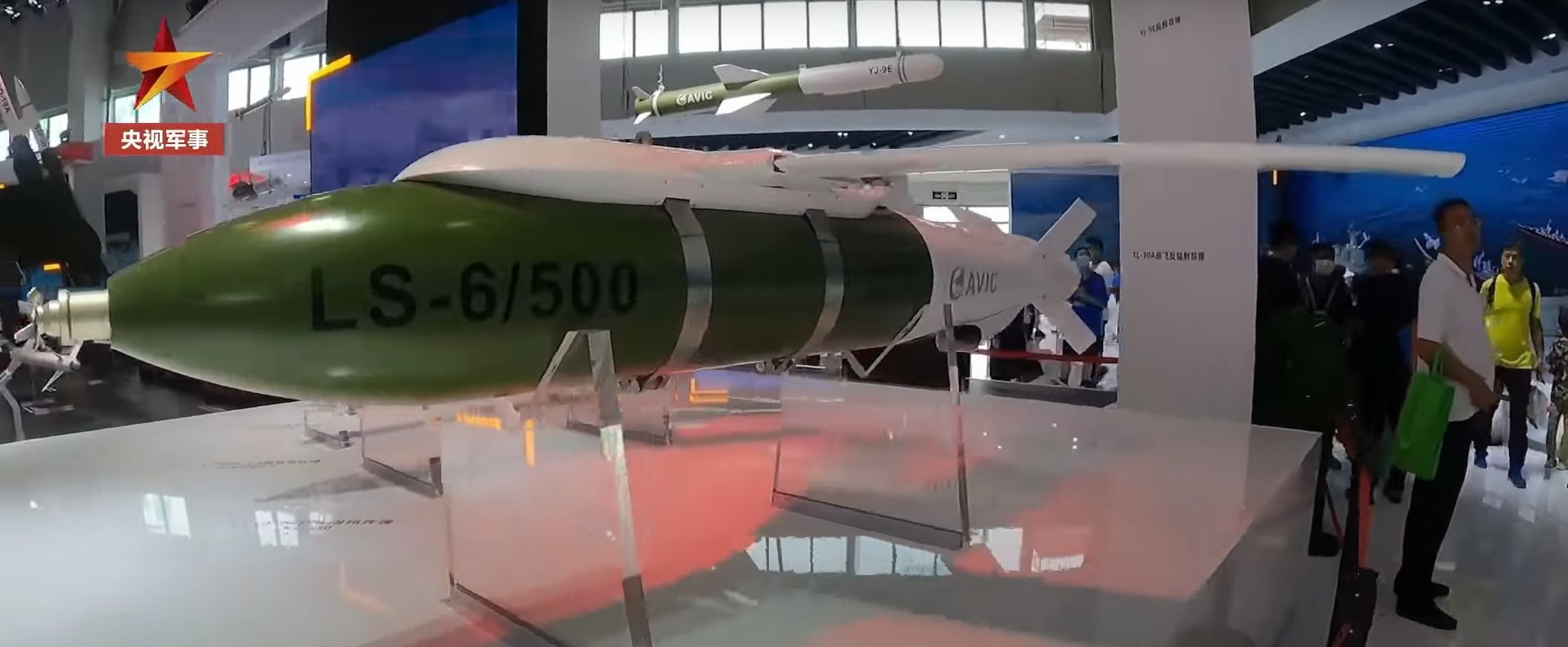
The bomb relies on the Beidou satellites for navigation, thereby allowing the fighter pilots to release the bombs from a standoff distance and remain outside the umbrella of enemy air defense systems. A turbojet engine powers it; according to Zhao, it has a range of over 200 kilometers.
“This (LS-6) is a very cheap form of standoff weapon, something your aerospace forces need because of your lackluster SEAD capability (Suppression of Enemy Air Defense),” says Zhao.
Zhao also recommends the K/JDC01 laser-designator pod, which can employ laser-guided weapons like the LS500J 500kg laser-guided bomb.

Also, to solve the problem of the Russian military’s SEAD deficiency, @zhao_dashuai recommends the TL-30 anti-radiation loiter munition. The TL-30 is a missile that can hover over the theater long enough to hunt enemy radars.
The missile can be equipped on fighter jets, trainer aircraft, drones, warships, and ground combat vehicles. It weighs 270 kilograms and is 3.7 meters long. It relies on a composite guidance method that relies on inertial navigation, satellite navigation, and wide-screen anti-radiation seeker.
Advertisement
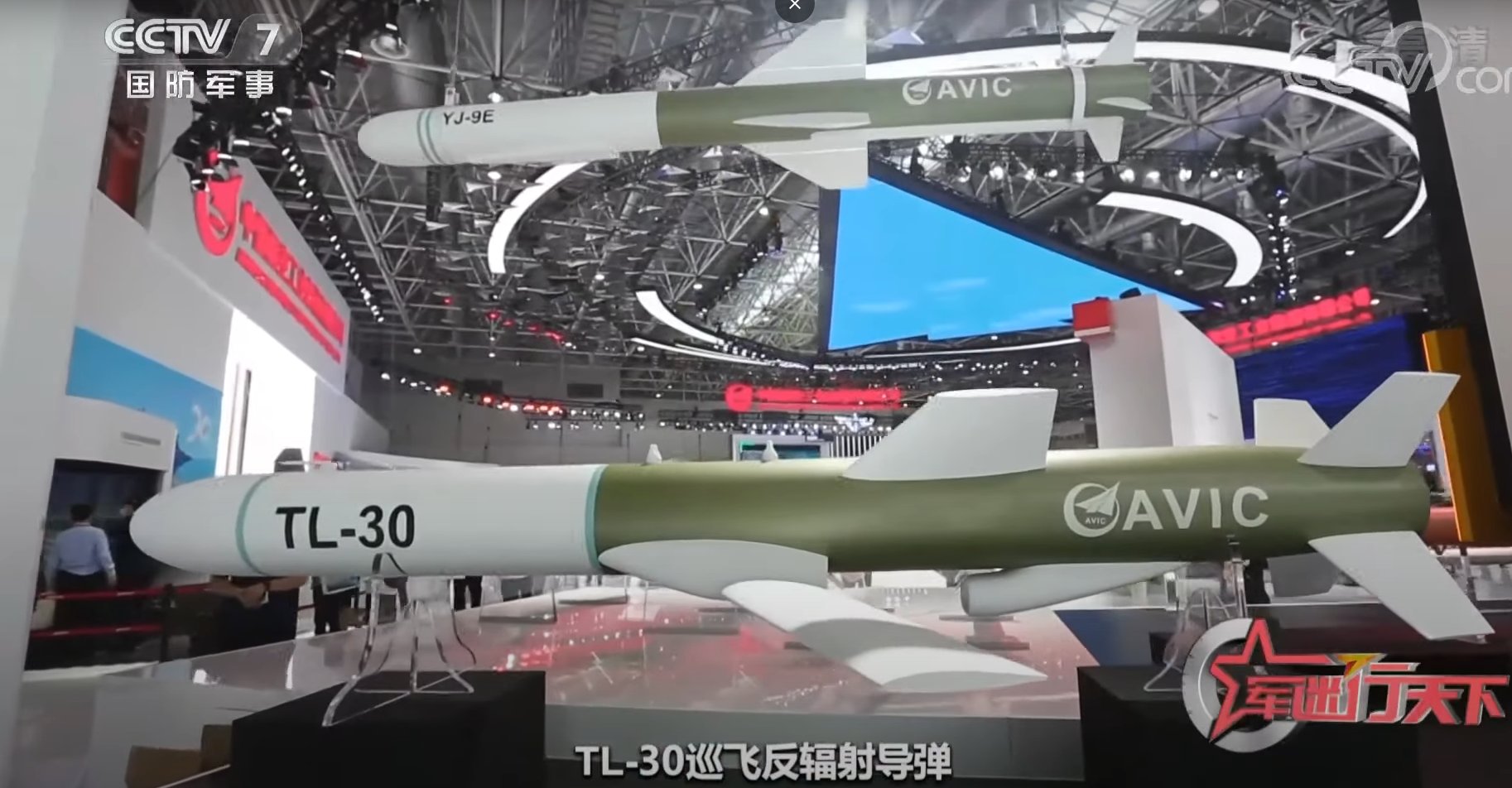
A small turbojet engine powers the missile and can attain a speed of up to Mach 0.65. Its maximum range is 280 kilometers, and the cruise is around 50 minutes.
The missile can target various medium and high-frequency radars on the enemy’s ground or ship, including guidance radar detection, tracking radar, illumination radar, and artillery radar.
Anti-Tank Weapons To Defeat Western Tanks
Recently, Kyiv’s western partners have also agreed to provide Ukraine with tanks, which even Russian military experts believe could add to Russia’s problems in Ukraine. Zhao realizes this and recommends a couple of anti-tank weapon systems.
“Mr. Putin, I also understand you are concerned about NATO tanks roaming in Ukraine,” says Zhao, recommending two options.
First is the Hong Jian 12 (HJ-12) anti-tank guided munition, which is said to be similar to the American FGM-148A Javelin. Considered one of the most advanced man-portable ATGM in the world, the HJ-12 can reportedly defeat the Explosive Reactive Armor (ERA) and then penetrate 800mm of steel armor behind ERA.
Advertisement
Such penetration might not suffice to defeat the heavy frontal armor of the M1A2 Abrams pledged by the US to Ukraine, but the HJ-12, in a top attack profile, can defeat the upward part of the turret of these tanks, which has a minimum level of armor protection.
The HJ-12 can also be deployed in direct attack mode to destroy buildings, bunkers, weapon crews, and concentrations of enemy troops.
Also, Zhao recommends the CR500 ‘Golden Eagle’ reconnaissance-attack helicopter drone system produced by China North Industries Group Corporation Limited (NORINCO).
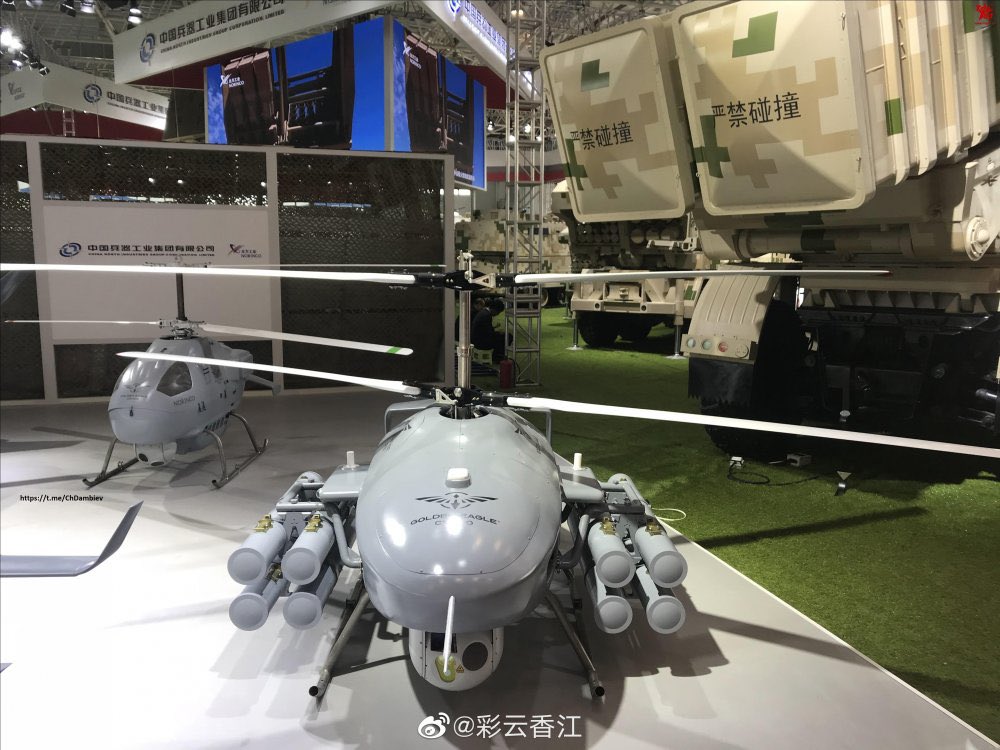
The CR500 can be used to guide the fire of tanks, infantry fighting vehicles, and self-propelled artillery for attack purposes, in which case, it can fire Blue Arrow 9 air-to-ground missiles. Also, when not mounted with missiles, the CR500 can be used for cargo delivery.
Advertisement
Air Defense And Artillery Systems
Zhao further recommends other air defense and artillery systems as urgent requirements for the Russian military’s war effort in Ukraine.
LW-30 Laser Air Defense System
These include the LW-30 laser air defense system, which reportedly has an output power of 30 Kilowatt and is primarily meant to be employed against drones, as well as soft and hard killing capability against photoelectric detection and guidance equipment.
It is said to be able to lock on targets from a range of 25 kilometers in 6 seconds and then launch a laser beam to destroy them. Such a system could be helpful for the Russian military to shoot down low-flying drones.
FK-3000 Air Defense System
Also, Zhao proposes the FK-3000 air defense system manufactured by China Aerospace Science and Industry Corporation (CASIC).
The system comprises a master combat vehicle, a transporter, an erector, a launcher, and radar (TELAR). It can also be equipped with two optional unmanned slave ground combat vehicles, the FK-3000 auxiliary launching vehicles.
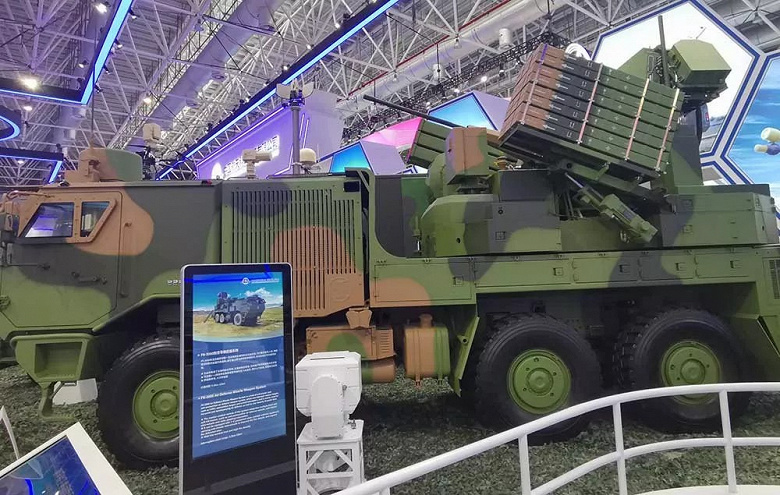
The TELAR consists of an unmanned turret with a cannon, a search radar, and a fire-control radar and is said to be equipped with six surface-to-air missiles (SAMs), an automatic Gatling-type cannon, and 48 smaller SAMs.
While the FK-3000 auxiliary launching vehicle consists of a remote-controlled turret mounted with an electro-optical/infrared sight and 24 short-range SAMs carried within six tube launch containers.
The FK-3000 can intercept UAVs, artillery shells, cruise missiles, armed helicopters, and other small targets.
SR-5 Multiple Launch Rocket System (MLRS)
Notably, Zhao also recommends the SR-5 multiple launch rocket system (MLRS), considered a Chinese version of the US-made HIMARS system, which has proven to be a game-changer for Ukrainian forces in the current war.
The system uses modular interchangeable rocket pods based on a 6×6 truck chassis. The launch vehicle has an integrated crane that can reload rocket pods without external help. Also, the Chinese SR-5 has two rocket pods instead of one, meaning it packs double the firepower of the HIMARS.
The vehicle has different types of pods. Initially, the SR-5 began with the capability to fire 220mm and 122mm rockets, with varying ranges and various warheads such as High-Explosive Fragmentation (HE-FRAG), incendiary, smoke, illumination, and even the anti-tank or pre-fragmented anti-personnel submunitions. Some of these rockets have GPS guidance for precision strikes.
Over time, new rocket types, missiles, and loitering munitions have been adopted into the SR-5 artillery system. So, the SR-5 can even launch loitering munitions with a maximum range of up to 70 kilometers.
The system can also fire C-705 anti-ship missiles with a range of 140-170 kilometers and King Dragon 300 short-range ballistic missiles, similar to the US MGM-140 ATACMS (Army Tactical Missile Systems), which the Ukrainian officials have also been lobbying the US to supply.
Advertisement